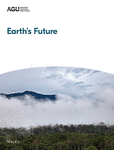Equilibrium Modeling for Environmental Science: Exploring the Nexus of Economic Systems and Environmental Change
2021
Authors
Cantele, M., Bal, P., Kompas, T., Hadjikakou, M., & Wintle, B.Abstract
Equilibrium models (EMs) are frequently employed to examine the potential impacts of economic, energy, and trade policies as well as form the foundation of most integrated assessment models. Despite their central role coupling economic and environmental systems, environmental scientists are largely unfamiliar with the structure and methodology underpinning EMs, which serves as a barrier to interdisciplinary collaboration and model improvement. In this study we systematically extract data from 10 years of published EMs with a focus on how these models have been extended beyond their economic origins to encompass environmentally relevant sectors of interest. The results indicate that there is far greater spatial coverage of high income countries compared to low income countries, with notable gaps in Central America, Africa, the Middle East, and Central Asia. We also find a high degree of aggregation within production inputs and sectoral outputs, particularly within the context of global socioeconomic scenarios. For example, we were unable to identify a single temporally dynamic study that distinguished between products arising from managed versus natural forest, or pastures relative to natural grasslands. Due to the necessary breadth and associated knowledge gaps within a model of the entire global economy, we see considerable potential for cross-disciplinary innovation as natural scientists gain familiarity into the role these models play in bridging the nexus between socioeconomic systems and environmental change.
Figure 1: Circos plot (Krzywinski et al., 2009) summarizing articles by theme, general/partial, and temporal dynamics. Full thematic color indicates general equilibrium; gray shade indicates partial equilibrium. Inner black spans indicate static models while red spans indicate dynamic models. AFOLU consists of studies focusing on agriculture, forestry, and other land use.


